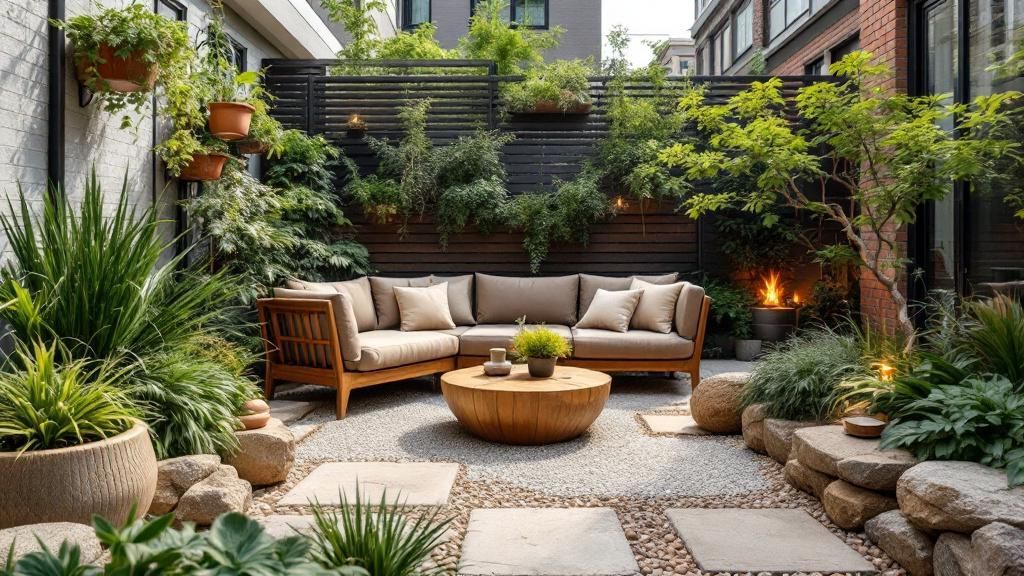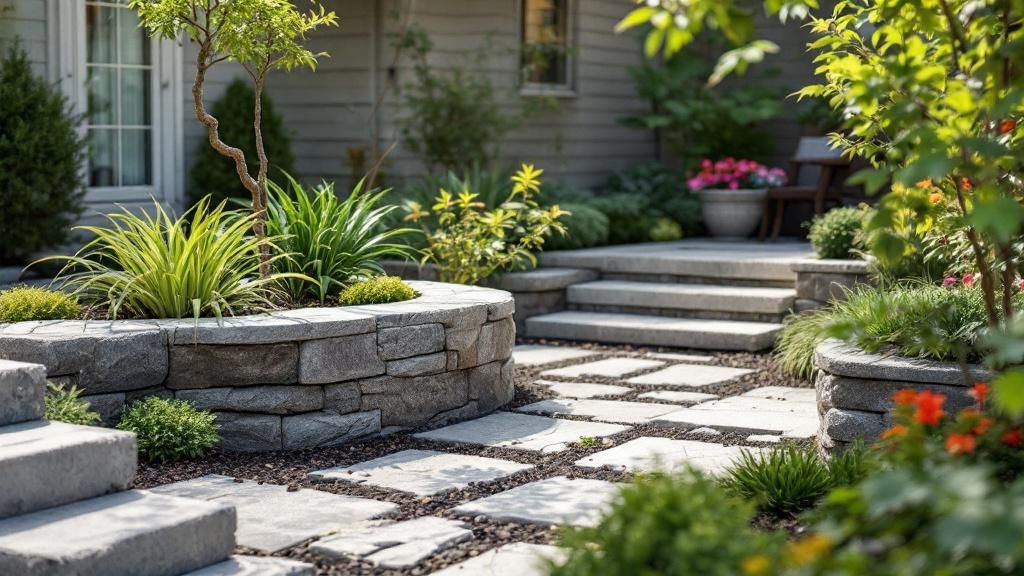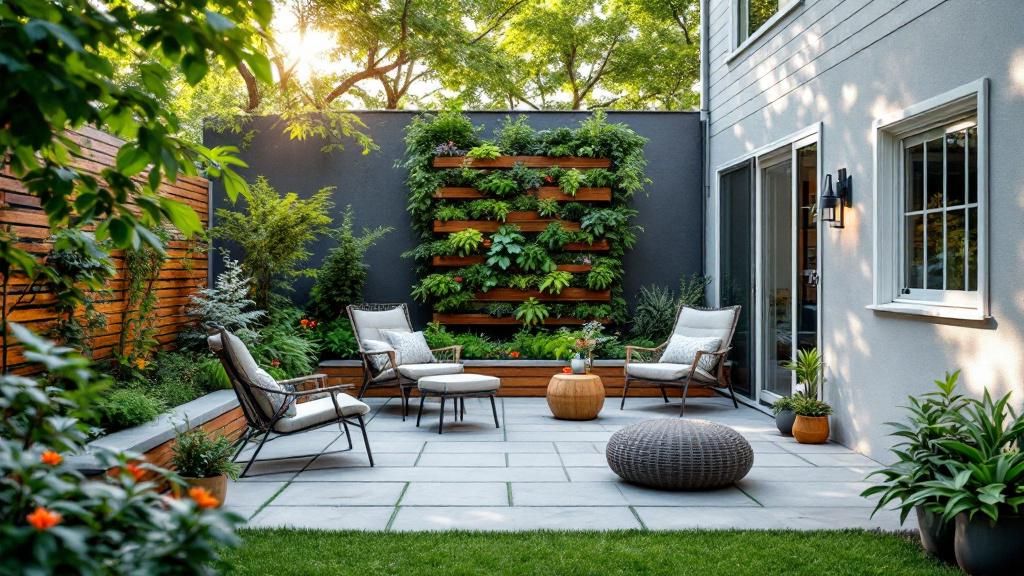
Residential Landscape and Sitework in Anchorage
Key Takeaways
-
Smart sitework is the foundation of functional and lasting landscaping.
-
Residential landscaping in Anchorage must account for local soil, drainage, and seasonal extremes.
-
Features like retaining walls, drainage channels, and grading protect your investment from erosion and flooding.
-
A thoughtful layout maximizes both visual appeal and outdoor usability.
-
Partnering with professionals ensures code-compliant, durable solutions tailored to your property.
Before planting trees or laying sod, the groundwork must be set—literally. Sitework refers to all the preparatory tasks that shape the physical landscape of a property, such as grading, trenching, drainage installation, and foundation stabilization.
In Anchorage, where soil conditions, freeze-thaw cycles, and rainfall create unique challenges, proper sitework is critical. Neglecting this stage often results in soggy lawns, shifting walkways, or flooded basements—costly mistakes that could have been avoided with proper preparation.
Many homeowners underestimate how foundational this phase is. Without correct grading or drainage systems, even the most beautiful landscape designs can fail within a few seasons. Sitework isn’t the most glamorous part of landscaping, but it’s arguably the most important.
Understanding Your Yard: Soil, Slope, and Strategy
Anchorage’s soils are often clay-heavy and slow to drain. If your property has a noticeable slope or low-lying areas, water runoff can quickly become an issue. Here’s what to assess before starting your landscaping project:
-
Drainage: Does water pool near the home or foundation?
-
Grading: Is the yard level, sloped away from structures, or uneven?
-
Soil Composition: Does it compact easily, or drain too slowly?
-
Sun and Wind Exposure: Knowing which parts of the yard get the most light or wind helps guide plant placement and structure orientation.
A professional contractor can evaluate these elements and design a grading and drainage plan that ensures long-term landscape success. They’ll also test for underground obstructions and check local zoning ordinances to avoid complications down the road.
Common Residential Sitework Services in Anchorage
Residential projects in Anchorage typically include some or all of the following:
Excavation and Grading
Grading involves shaping the land to improve drainage, create flat pads for patios or lawns, or contour the yard for aesthetic appeal. Proper grading directs water away from the home and helps prevent erosion.
In Anchorage, excavation may also include removing large rocks, tree roots, or unstable soil pockets. The goal is to create a uniform, compacted base that can support everything from pavers to planters.
Drainage Installation
French drains, dry creek beds, swales, or trench drains can be installed to manage rainwater and snowmelt. In Anchorage’s variable climate, this is essential for protecting both structures and landscaping.
Subsurface drains may also be used for areas with particularly poor drainage. Adding gravel layers or drain tiles ensures water moves efficiently away from your structures.
Retaining Walls
If your yard has steep slopes, a retaining wall not only adds structure but also prevents soil from shifting during freeze-thaw cycles. Built with concrete blocks, stone, or timber, they can also double as seating walls or garden borders.
Properly engineered walls can support tiered planting beds, create level patios, or define raised lawn areas. Anchorage’s terrain makes these more than aesthetic—they’re often necessary.
Utility Trenches
For homes adding irrigation systems, outdoor lighting, or other underground utilities, trenching ensures clean and code-compliant installation. It’s especially helpful when preparing for future expansions like garages, hot tubs, or fire pits.
Designing a Functional and Beautiful Yard
Sitework sets the stage—but landscaping brings the vision to life. Once your property is properly prepped, the real fun begins. Here’s how to balance form and function:
Define Zones
Use hardscaping (like walkways and patios) to carve out distinct zones—one for dining, another for gardening, or an area just for lounging. This makes your yard feel more spacious and organized.
Zones can also help with snow management. A gravel path leading to a firewood shed, for example, doubles as a snow-clearing route during winter.
Layer with Plants
Combine low-maintenance native plants with shrubs and perennials for a dynamic but manageable landscape. Raised beds or terraced garden features can add height and depth to flatter properties.
Layering plants by height and bloom time creates visual interest across seasons. Consider mixing evergreens with flowering species for year-round appeal.
Irrigation Integration
Smart irrigation systems, especially drip lines and strategically placed sprinkler zones, help maintain a lush yard without water waste.
Anchorage’s short growing season makes proper watering crucial—especially in June and July, when plant growth peaks.
Sitework Enhancements That Add Value
Whether you’re prepping for a garden, building a shed, or upgrading your curb appeal, certain enhancements offer practical value in Anchorage’s environment:
-
Gravel Pathways: Easy to install and great for directing foot traffic.
-
Mulch Beds: Reduce weed growth and improve soil moisture.
-
Privacy Fencing: Helps block wind and offers visual separation from neighbors.
-
Concrete Pads: Perfect for hot tubs, grills, or outdoor seating areas.
-
Raised Garden Beds: Excellent for cold-hardy vegetable gardening and improved soil drainage.
-
Boulder Features: Natural to the region and great for stabilizing slopes or adding texture.
These elements can all be incorporated into a comprehensive residential landscaping plan. The right mix of softscape and hardscape makes your outdoor space functional and enduring.
Why Work With Experienced Contractors
Sitework isn’t just digging and dumping. It involves an understanding of Anchorage’s municipal codes, soil mechanics, drainage behavior, and seasonal weather shifts.
Experienced teams bring the equipment, knowledge, and foresight to ensure your project avoids costly errors. A provider like Titan, with years of experience navigating Anchorage’s tough terrain and weather, has helped countless homeowners avoid drainage issues before a single plant went in the ground.
Their ability to plan around utilities, account for snow loads, and select cold-tolerant plant species makes them a valuable partner for any Anchorage homeowner looking to improve their yard.
Frequently Asked Questions
Do I really need professional sitework for a small yard?
Yes. Even small landscapes benefit from proper grading and drainage, especially in Anchorage’s freeze-thaw climate.
Can landscaping increase my home’s value?
Absolutely. Well-planned yards improve curb appeal and functionality—both key selling points.
What is the best time of year for sitework in Anchorage?
Spring through early fall is ideal, once the ground is thawed and stable.
How long does sitework usually take?
It varies based on scope. A simple grading job might take 1–2 days, while more complex projects could take a week or more.
Is permitting required for major landscaping in Anchorage?
Yes. Projects involving structural elements like retaining walls or large-scale grading may require municipal review and approval.
What plant types thrive in Anchorage landscapes?
Hardy perennials like hostas, sedum, Karl Foerster grass, and dwarf birch are reliable. Local nurseries often have the best recommendations.

